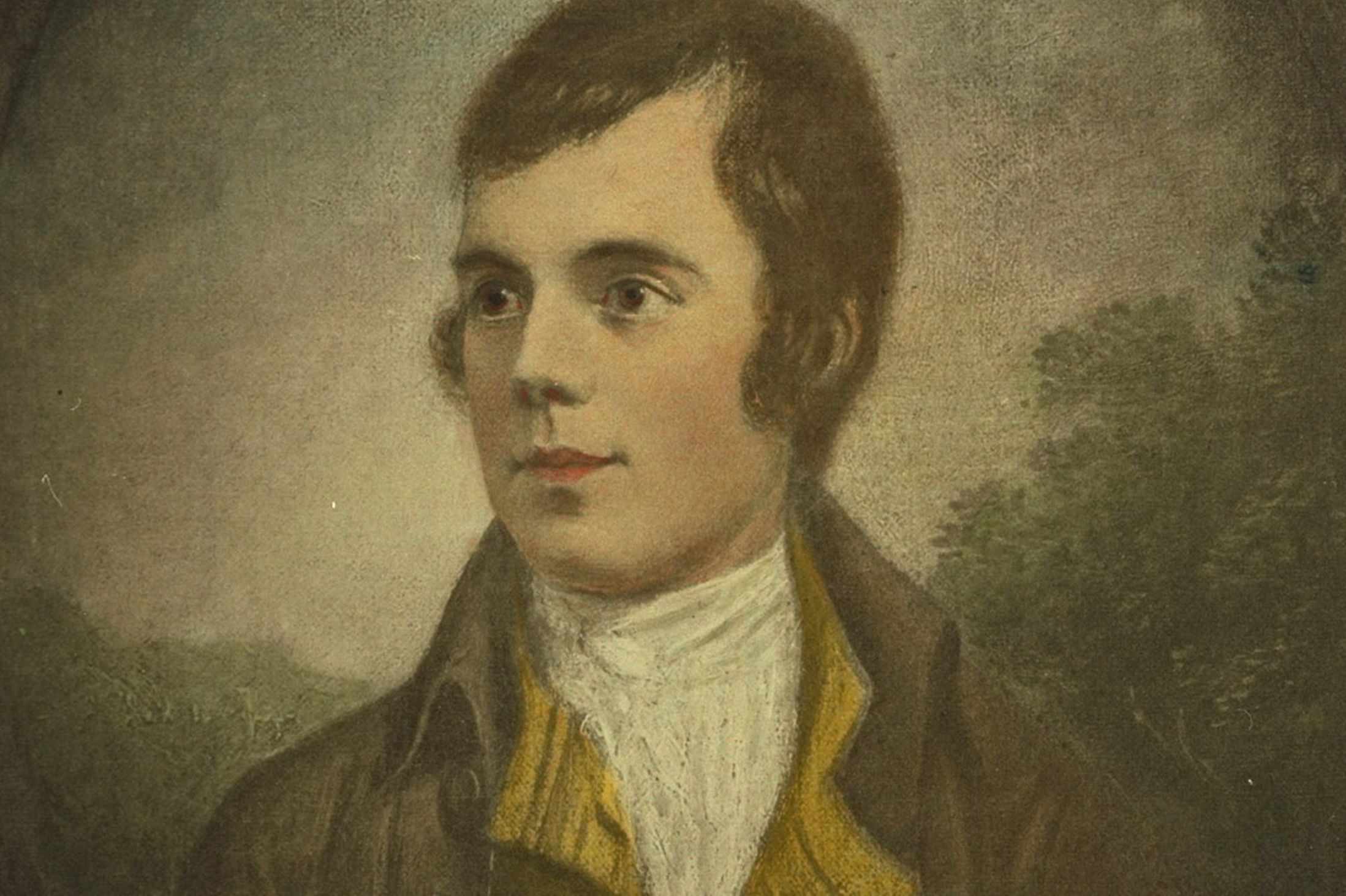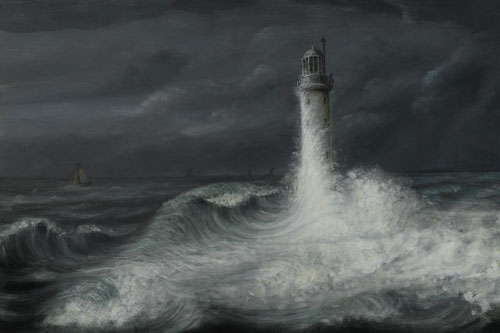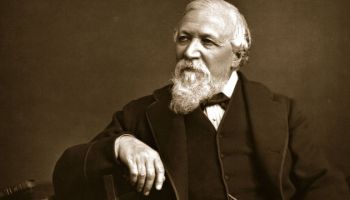About the Poet:
Robert Burns was a Scottish poet and lyricist. He is generally thought to be the national poet of Scotland because he is the most widely read among all poets who have written in the Scots language. Burns has also written in English and a light Scots dialect so that his poetry would be understood by an audience beyond Scotland as well. He has even written in standard English.
The volume of works by Burns which came to be known as Poems, Chiefly in the Scottish Dialect came out in 1786. Also called the Kilmarnock volume, it contained much of his best writing.
In addition to making original compositions, Burns also collected folk songs from across Scotland, often revising or adapting them. While “Scots Wha Hae” has often served as an unofficial national anthem of the country, “Auld Lang Syne” is famous as a song of farewell.
About To a Louse:
“To a Louse” is both a comic and an ironic poem. It consists of 8 stanzas. Each of these stanzas is again made up of 6 lines. Hence, the entire poem consists of 48 lines in total.
Summary of To a Louse:
Stanza 1:
In this stanza, the poet speaks directly to the Louse and asks it sternly where it is going. He says that the Louse is presumptuous, and this may get it into a lot of trouble. He has not seen any louse walking over such fine materials as the gauze and lace that go into the making of a lady’s bonnet. The poet is also sure that the Louse is unable to find much food in such an environment.
Stanza 2:
In this stanza, the poet says that since the Louse is ugly and because its movement gives us chills, neither villains nor good men can prevent themselves from being disgusted by it and wanting to avoid it at all costs. Next, the poet questions how the louse could dare to sit upon such an elegant lady. Instead, it should try to feast elsewhere, on the body of a destitute man, for example.
Stanza 3:
In this stanza, the poet describes what kind of environment the louse should roam in. He says that an appropriate site for a louse’s habitation is on the head of a beggar. Since beggars do not have the luxury of being able to care for their appearance, their heads are likely to be filled with unruly and abundant hair. In fact, the poet imagines the head of a beggar to be like a field where many cattle graze in groups. Since the so-called cattle would have to be small enough to fit within the hair of the beggar, they can only take the shape of small insects such as the Louse, and thus it would feel at home amongst such company. If the hair is particularly thick and unmanageable, it may even appear to be a plantation. Since only lords and ladies can use combs made of the horn or bone of animals, the Louse is unlikely to face such an impediment in the environment suggested by the poet.
Stanza 4:
In this stanza, the poet notices that the Louse seems to have become invisible in among the many folds in the material of the lady’s bonnet that is fastened so tightly around her head. That is why he asks the Llouse to remain in that position and not move. However, in the next instant, he realizes that he was mistaken. He figures out that the only way the louse may escape the lady’s sight is if it is able to get to the very top of her bonnet. This is exactly what the poet instructs the louse to do.
Stanza 5:
In this stanza, the poet sees the louse sticking out its nose, and the nose is gray in color, as if it were a gooseberry. However, the poet wants to make the nose more noticeable. So he wishes he could get his hands on some powder or resin that would be a bright red in color. If he could do so, he would put a large amount of the material on the Louse, as if to dress it up.
Stanza 6:
In this stanza, the poet says that there are other places where the sight of a louse would have caused less shock. For example, he says he would have expected to see the Louse on the flannel cap atop the head of an old matron. He would even have expected to see it on the undershirt of a ragged boy. However, it is outrageous that the Louse has chosen to position itself on the bonnet of a lady that balloons out over her head.
Stanza 7:
In this stanza, the poet turns his attention away from the Louse and focuses instead on the lady whom he calls Jenny. He tells Jenny not to toss her head in an air of pride, as ladies usually do when they think they are looking fine on a certain day. This is because she is absolutely unaware of what effect the presence of the Louse is having on the people around her. People are pointing at her and winking at each other.
Stanza 8:
In this stanza, the poet wishes that the supreme power may give us the ability to see ourselves as other people see us. He thinks that such an ability would allow us to shed our misconceptions about our own appearance. In fact, he anticipates that this ability would rid us of our pride and our vain self-love.
Critical Analysis of To a Louse:
This analysis of Robert Burns’ “To a Louse” is divided into three sections – context, rhyme scheme and rhetorical devices, and themes.
The Context of To a Louse:
“To a Louse” was written by Robert Burns in 1786. The poet had gone to church one day, and he was sitting right behind an elegant lady. However, he was surprised to discover a louse creeping out of her head and on to her bonnet. He was also amused at noting the reactions of the lady and the people around her in light of this incident and decided to write a poem about it. However, the poem is not as simple as it seems. Behind the simple description, Burns is making a comment on the vanity of human nature.
Rhyme Scheme and Rhetorical Devices of To a Louse:
Each stanza in this poem follows the rhyme scheme AAABAB. This kind of rhyme scheme was Burns’ favorite and was known as the standard Habbie, after the Piper Habbie Simpson. It is also sometimes known as the Scottish stanza or the six-line stave.
Throughout this poem, the poet uses the device of an apostrophe. This rhetorical device is used when a poet addresses his or her poem to an absent or silent audience. Here the poet speaks directly to the Louse, as well as to the lady on whose bonnet it is sitting, but we never see either of them responding to the poet at any point in the poem.
In line 2 of the 2nd stanza, the poet uses the device of alliteration. This rhetorical device is identified by the repeated sound of the first consonant in a series of multiple words, or the repetition of the same sounds or of the same kinds of sounds at the beginning of words or in the stressed syllables of a phrase. Here the poet repeats the “s” sound 4 times in a single line when he writes that the Louse is “Detested, shunned by saint and sinner”.
In lines 3 and 6 of the 3rd stanza, the poet uses the device of metaphor. This rhetorical device is used when a covert comparison is made between two different things or ideas. Here the poet compares the Llouse and other head insects to cattle, and the head of a beggar to a plantation.
In line 5 of the 3rd stanza, the poet uses the device of metonymy. This rhetorical device consists of the substitution of the name of an attribute or adjunct for that of the thing meant. Here the poet uses the word “horn’ and “bone” to mean comb since combs were often made of such material in the eighteenth and nineteenth centuries.
In line 2 of the 5th stanza, the poet uses the device of simile. This rhetorical device is used when an overt comparison is made between two different things. Here the poet compares the nose of the louse with a gooseberry, both being gray in colour, and also uses the word “as” while making this comparison.
In line 5 of the 7th stanza, the poet uses the device of synecdoche. This rhetorical device is used in many ways to represent one thing with the help of an entirely different one. Here the poet uses part to represent the whole when he writes “winks’ and “finger-ends” to mean the people sitting around the lady at church.
Themes of To a Louse:
False class consciousness:
Throughout the poem, the poet tells the louse that the lady’s bonnet is not an appropriate site for its habitation. This is because the lady is an aristocrat and takes much care of her appearance. A more suitable place for the louse would be on the body of someone belonging to the lower classes, whether it is beggar or a matron or a street child. None of these people can afford to invest in their appearance, and so the louse’s presence on their heads would not raise eyebrows. By making such ridiculous statements, the poet is trying to expose how artificial the concept of class is. It is a man-made institution. To a louse, such an institution is both is unknown and has no value. Hence, any head is equal to another in its eyes. Man should also perceive each other in this way and prevent any discrimination amongst one another.
Perspective:
The poet also stresses on the importance of perspective. The way we see something is not the same way in which another person sees it. The same applies to personal appearance and nobility. These qualities are subjective in nature. The lady at church believes she is looking most elegant and dignified. She takes pride in her appearance and tosses he head to show herself off. However, she is unable to see herself through the eyes of the people around her. To them, the sight of the louse on her bonnet makes her look ridiculous.
Some online learning platforms provide certifications, while others are designed to simply grow your skills in your personal and professional life. Including Masterclass and Coursera, here are our recommendations for the best online learning platforms you can sign up for today.
The 7 Best Online Learning Platforms of 2022
- Best Overall: Coursera
- Best for Niche Topics: Udemy
- Best for Creative Fields: Skillshare
- Best for Celebrity Lessons: MasterClass
- Best for STEM: EdX
- Best for Career Building: Udacity
- Best for Data Learning: Pluralsight
















